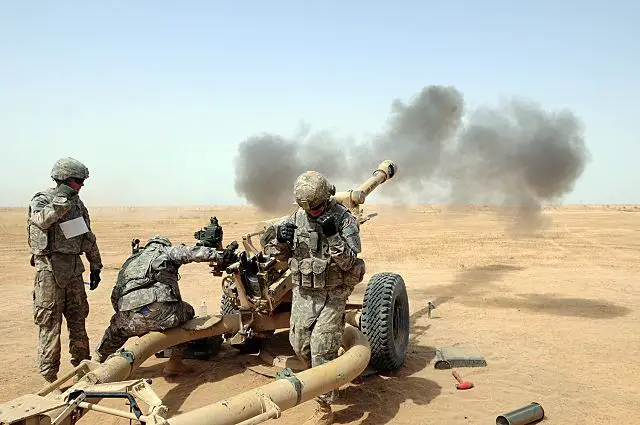|
|
|||
|
Military Defense Industry Technology - Fire control artillery systems
|
|||
|
|
|||
|
U.S. Army researchers work to build a common fire control system for artillery components.
|
|||
|
Ralph Tillinghast, director of the Collaboration and Innovation Laboratory, U.S. Army Armament Research, Development and Engineering Command, or ARDEC, Picatinny Arsenal, New Jersey. spoke April 21 at the National Defense Industrial Association-sponsored 2015 Armament Systems Forum, about efforts to build a common fire control system across weapons platforms. Such a system includes the interface, software and hardware.
|
|||
|
|
|||
 Savings of $6 million were realized by using common software on the fire control system of the M119 howitzer. 1st Infantry Division Soldiers are shown firing a weapon. (Photo credit US Army Spc. Shantelle J. Campbell) Savings of $6 million were realized by using common software on the fire control system of the M119 howitzer. 1st Infantry Division Soldiers are shown firing a weapon. (Photo credit US Army Spc. Shantelle J. Campbell) |
|||
|
|
|||
|
Nothing is more basic to a warfighter than aiming and firing a weapon and coordinating that task with others - a process known as fire control.
Having this commonality, Tillinghast said, would result in a decrease in testing, cost, development time and training. It would also result in an increase in reliability, maintainability and profitability for the Army. But the biggest beneficiary, he said, would be the warfighters themselves, who would have a familiar interface for fire control and not have to learn new systems as new products are developed. Another benefit to a common fire control system, he said, is that as new weapons systems were developed, Soldiers would get their hands on them more quickly because software and hardware could be reused rather than reinvented with each new system. One negative of having a common fire control involves the increased risk from either a cyber-attack or a technological glitch. If all weapons systems shared the same fire control system, he said, such an attack or glitch might more easily affect all those systems at the same time. |
|||
U.S. Army researchers work to build a common fire control system for artillery components
- Posted On















